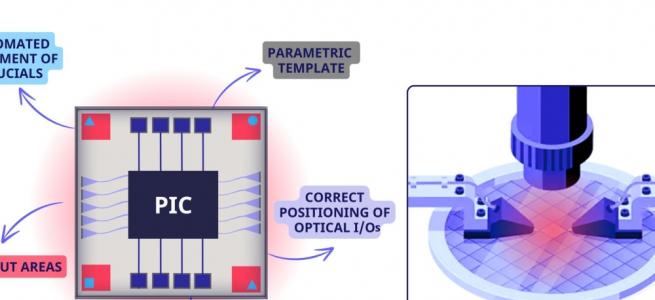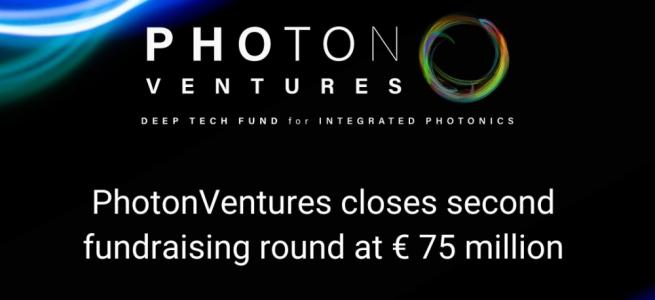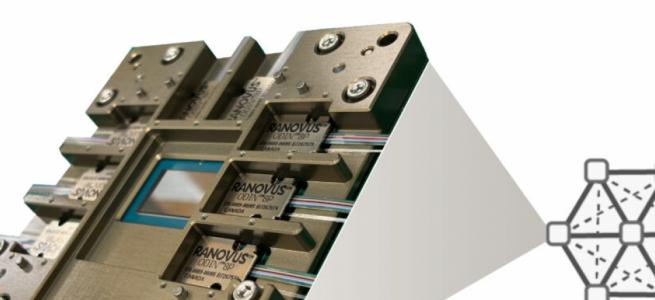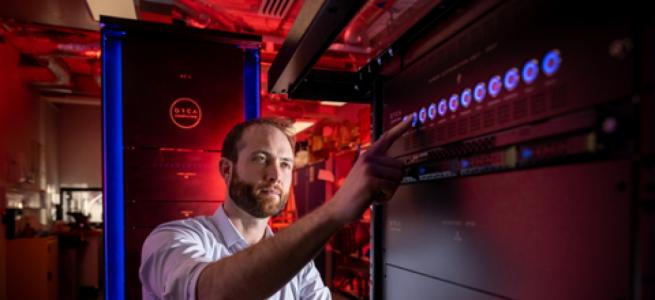
A global internet ecosystem – powered by hybrid PICs
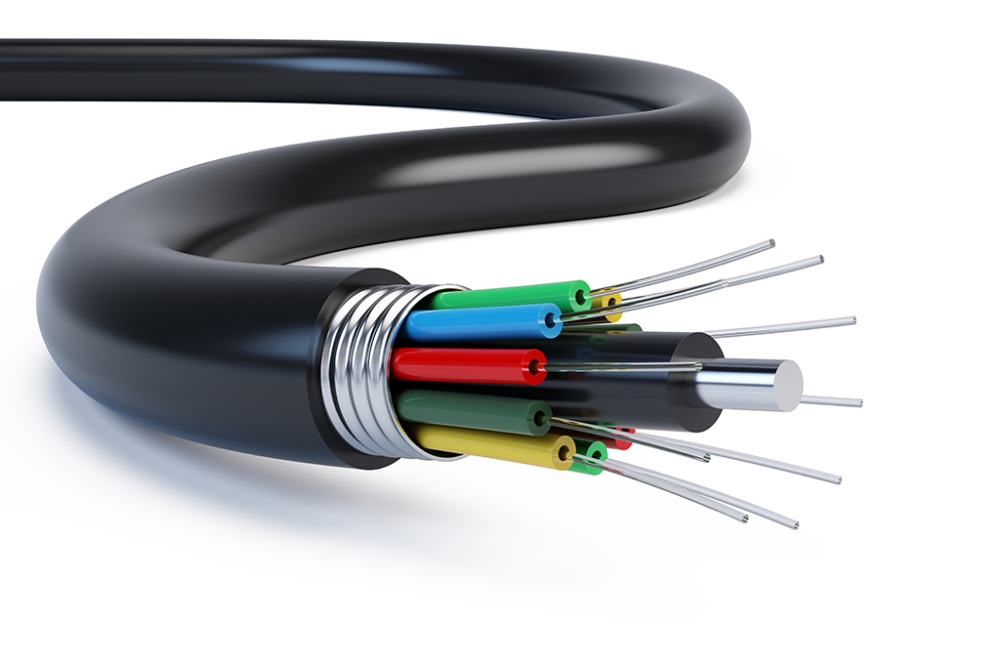
The state of the fiber-optics telecommunications
industry, datacenters, optical networks, and optical components such as
lasers and modulators and more specifically PICs will carry us through
the next few decades of photonics transformation and evolution of the
internet at light speed powered by PICs.
By Michael Lebby, CEO of
Lightwave Logic
The last two years has been transformational for many of us: we’ve figured how to work at home, remotely, taught our children similarly, and some of us have even prevented our pets from photobombing our image on a video platform! We’ve learnt how to order food and household supplies from our computer, and we have connected with our families. There are many other things we have learnt, but for a second, just imagine if the internet was not available? Life and working remotely would be much more difficult.
The internet is now considered a utility that provides us with many things that make up a richness in our lives. The obvious things it provides is data that can bring email, video calling, shopping, and be able to pay bills. The less obvious things the internet can do includes things like health, education, and more innovative ways to collaborate and socialize. While the internet is not a perfect replacement for face-to-face interaction, it does provide a universal vehicle that is global and is a continually growing infrastructure. In fact, it is more than that: it’s a global internet ecosystem.
As the pandemic has raged through many countries world-wide, it has been the internet that has delivered telemedicine, medical equipment, children’s classes, business meetings, and Friday afternoon social drinking parties. We can see the important aspects of the internet, but what is it, and how does it work?
As the PIC Magazine reader well knows, the internet is based in fiber-optic telecommunications technology where the infrastructure is globally interconnected using fiber-optic cables. These cables are made from glass, and the glass is so pure that lasers that generate light can send light hundreds of km across oceans and countries. Some of the communications are wireless in space, some use under-sea cables, and others use wireless with things like 5G for more local cellular environments.
The common denominator for the global internet ecosystem is being able to evolve our growing fiber-optic communications infrastructure to more advanced and seamless design. Remember the days when we had to use a modem dial up for the internet, or if we had a mobile cellphone in the 1990s all we could do is use audio or text using pagers. Today, we can access the internet from any number of consumer portable products, and be able to work, play, shop and pay bills from almost anywhere.
How does the internet ecosystem evolve? Simply put, more advanced technology solutions must be designed, implemented, and run. The domain for lasers sending light, and photodetectors receiving light is called, of course, photonics. As photonics technology advances, we can send the light faster, consumer less power, and communicate more efficiently.
We have seen over the past 4-5 decades that photonics in general has enabled many things and it has become part of our lifestyle. We’ve seen this with fiber-optics as it is one of several basic technologies that are the foundation of the internet (like plumbing and electricity in buildings). Photonics in general has enabled a broad portfolio of things that improve our quality of life such as: displays, LED lighting, laser-based manufacturing, image sensors as cameras, solar cells, and with a little more brainstorming, the list continues extensively.
We also know that photonics will be integrated just like Integrated Circuits (IC) over 50 years ago. Integrated from an electronics IC standpoint is putting many transistors onto a semiconductor chip. Today, there are many billions of transistors in the advanced chips that are designed in silicon. In photonics, similar trends apply, although photonic devices are typically bigger than transistors, the expectation is that integrated photonics (typically referred to as Photonic Integrated Circuits – PICs) will become the engine for new designs that will positively impact our lifestyle. As part of this lifestyle, PICs will enable new products, and those products will be over and above the current major incumbent business for PICs today – fiber optic communications for the internet. Future PICs will be key to quantum communications and quantum computing, and things that are becoming important in today’s world: security and quantum cryptography. These PICs will contain many technologies so that their performance will be enhanced. Folks in the industry term this ‘hybrid PICs’.
The figure above shows how different materials can be added to existing PIC platforms to increase performance and functionality. Today, we see InP lasers added to silicon photonics, and silicon electronics (DSP, ASIC ICs) added to InP PICs. The evolution of hybrid PICs means that new materials platforms such as polymers, dielectrics etc., will be added to PICs as the application space grows over and above fiber optic communications.
Fiber optic communications has been driven essentially through the delivery of high-speed data in fiber optic cables for the telecommunications, datacenter, data communications, and high-speed computing industries. As we use the internet more frequently, we have derived the term ‘heavy data’ where we utilize more and more data to communicate, especially in and around datacenters. These basic technologies have nurtured the optical networking platforms of social medial companies such as Google and Facebook. We have traveled a long way since the days of the early, even clunky internet browsers.
The markets for fiber optic communications that includes the sub-segments that deal with ‘heavy data’ over the next decade can be estimated to be over $500B growing toward $1T by the end of this decade. The major engine for products in these markets is the PIC engine that is a critical part of a transceiver – an optical device that sends and receives optical data quickly and efficiently and contains not only lasers to generate the light, but high-speed modulators to switch the light. If modulators can be designed to be faster, then the signals over the fiber-optic cables can be sent quicker, and this means we can send more data – thereby aligning with the term ‘heavy data’.
Today, we see many of these optical components being semiconductor based with integrated photonics platforms such as silicon photonics, indium phosphide etc. A transformation is happening with advanced materials that will help save the semiconductors by boosting performance and lowering power consumption. This family of materials are polymers, in fact electro-optic polymers that in a modulator device structure naturally switch light very fast, and with very low voltage, and this leads to low power consumption.
This is an exciting transformation, and in part is like what polymers have done for TVs and display panels/monitors with organic light emitting diodes (or more popularly known as OLEDs ).
The figure above shows that with electro-optic polymers, there are a variety of modulator vehicles that can provide high performance speeds with very low power consumption. The Polymer Plus™ and the Polymer Slot™ modulators integrate seamlessly with integrated photonics platforms such as silicon photonics. Process integration with foundry PDKs (process design kits) will allow efficient scaling for mass commercialization.
The global internet ecosystem, while based on fiber-optic communication markets today, has allowed technologists to design optical components such as lasers, modulators, photodetectors to send and receive light efficiently. In fact, the global internet ecosystem will be powered by PICs, and more specifically, hybrid PICs.
The figure above shows the potential for higher speeds and data rates using single lane and quad lane protocols of NRZ and PAM4 that are common in the industry today. With optical modulator bandwidths that exceed 100GHz, then higher data rates that aggregate to over 1Tbps are possible without the need to add complexity to the modulation encoding techniques that are widely available today. Thus, faster optical modulators can literally break through the wall where typical device bandwidths are around 30-50GHz. Electro-optic polymer modulators open the door for higher data rates, and an actual polymer modulator chip with optical input, output, thermal bias and rf contacts is shown at the top of the figure.
The figure above shows the optical 3dB bandwidth of electro-optic polymer modulators verses the 3dB optical bandwidth of competing technologies. Polymers have the wonderful and natural advantage that their materials properties are velocity-phase matched, and this allows their natural performance to exceed semiconductor materials technologies. In the figure, the electro-optic polymers are closing in at the upper limit of the latest test equipment of 110GHz.
While fiber communications are the incumbent markets today, the global internet ecosystem will expand to other related and consumer opportunities that will also need PIC based optical engines: Automotive LIDAR for self-driving vehicles, self-driving or flying drones, photonic sensing and recognition, displaying information, images through displays, lighting and illumination using LEDs, solar powered plants and electricity generation using solar cells, AI (artificial intelligence), gaming, crypto-currency generation, agriculture, and advanced computational machines – and the list continues depending on how far you brainstorm markets and applications that require the ability to not only communicate with other parts of the internet but utilize photonics to drive our lifestyle.
To keep the global internet ecosystem growing we need to commit to ways to make sure sustainability in all these markets and applications is achieved. We need to expand the diversity of people in the photonics community, we need to educate and train a workforce in the photonics field, we need to balance investment with policies to enable entrepreneurship, innovation, and we need to build in security, safety, and protection to ensure seamless infrastructure operation.
These are big tasks, and if we succeed in our investments to grow the growing global internet ecosystem, the rewards are great; they provide us with vehicles to enrich our lives and benefit a whole range of industries from examples of say, defense to medical to simply eating a more efficient vegetable that has been assisted using solid state lighting with LEDs. The dependence of people’s lives based on the global internet ecosystem are huge – their way of life will be affected directly by fiber-optic communications. As we steadily move out of the COVID pandemic we will see our lives have been improved by the global internet ecosystem, and we will have an appetite for more. We will have a much clearer perspective of what it takes to protect and uplift ourselves and our communities. The state of the fiber-optics telecommunications industry, datacenters, optical networks, and optical components such as lasers and modulators and more specifically PICs will carry us through the next few decades of photonics transformation and evolution of the internet at light speed! Cheers to the global internet ecosystem that will be powered by PICs.








